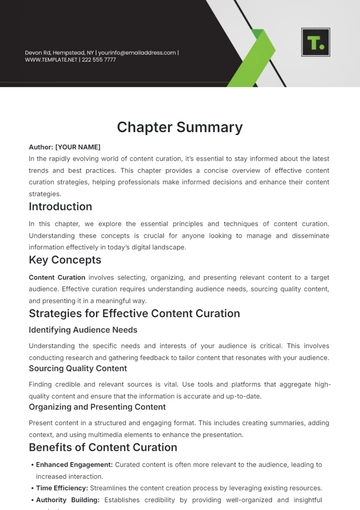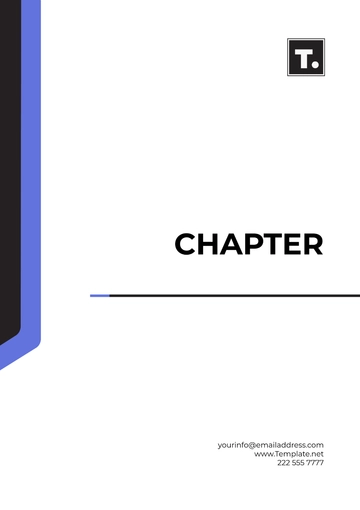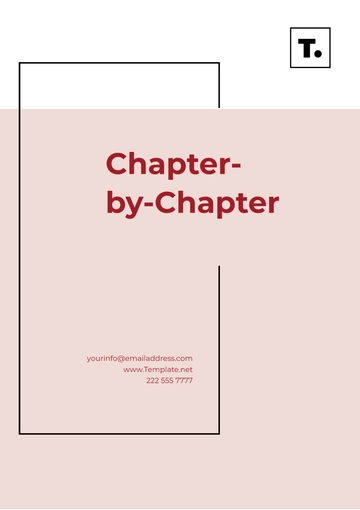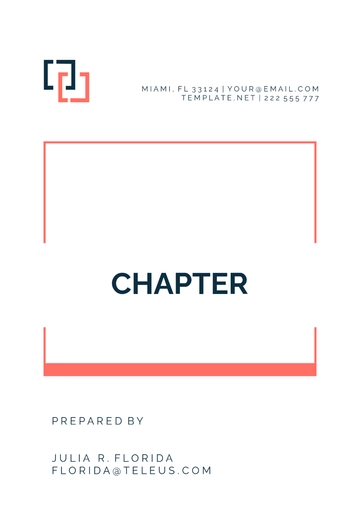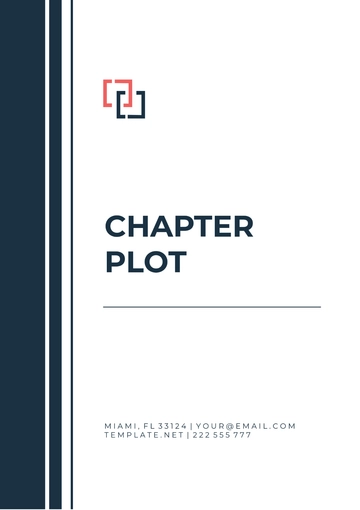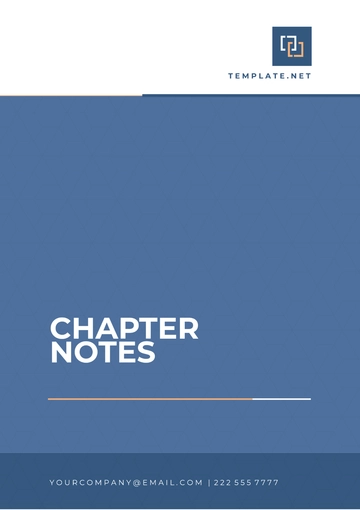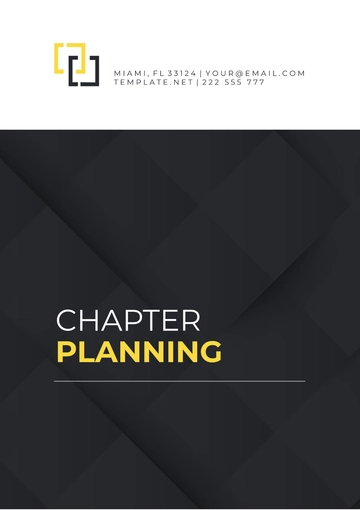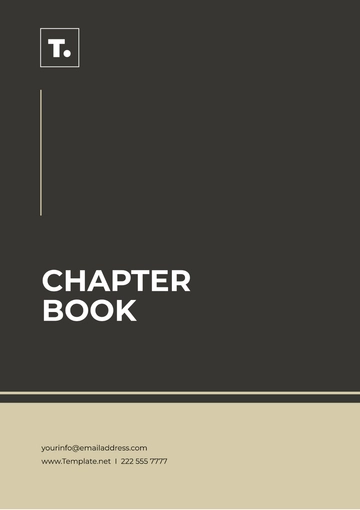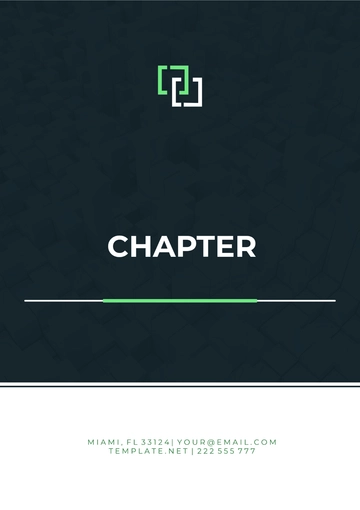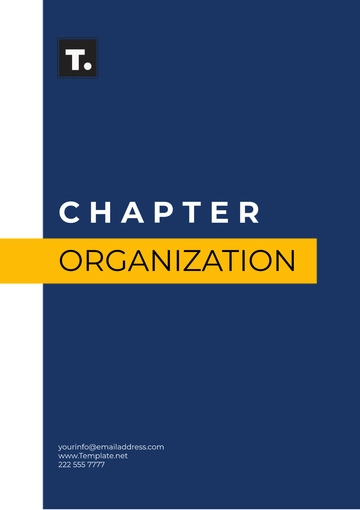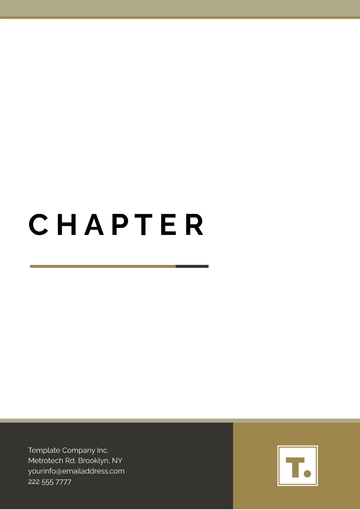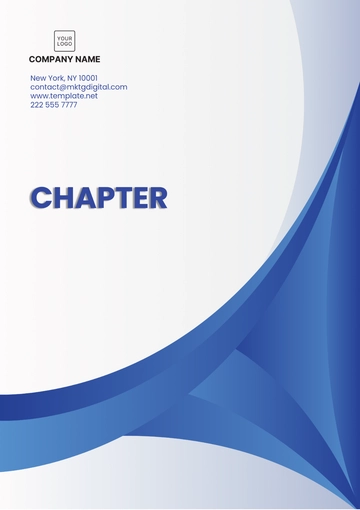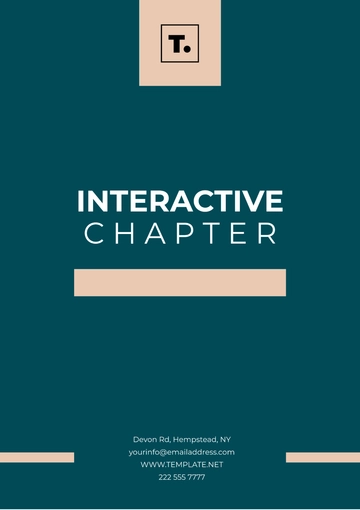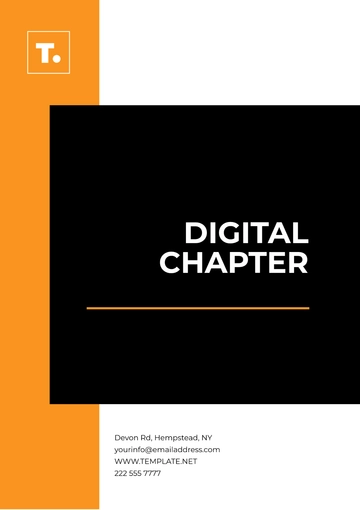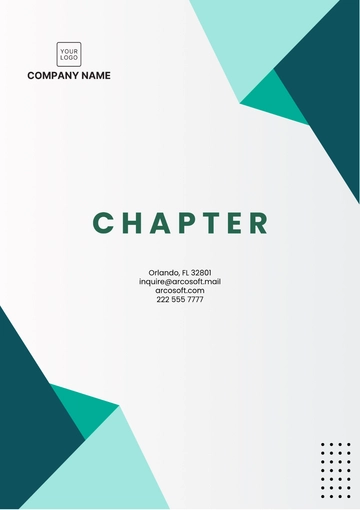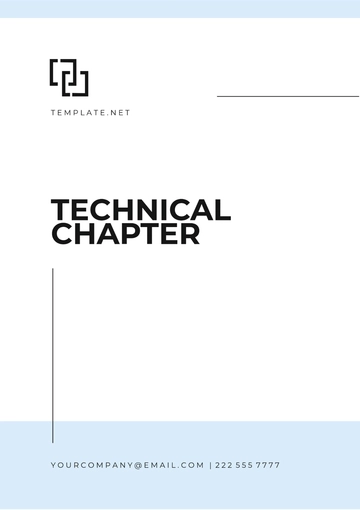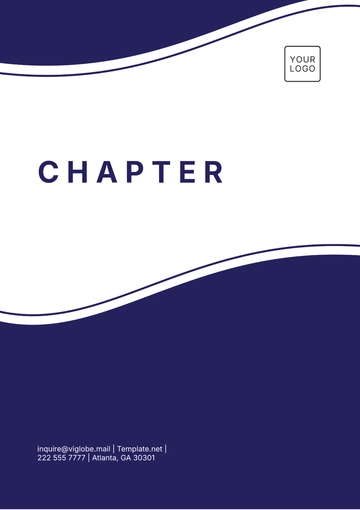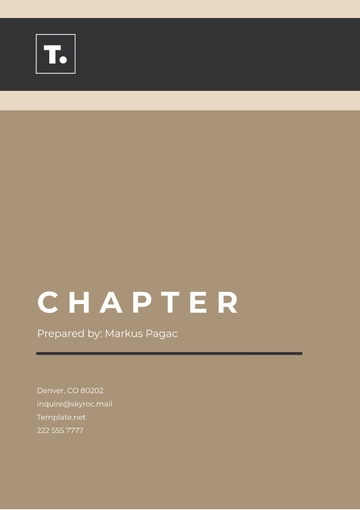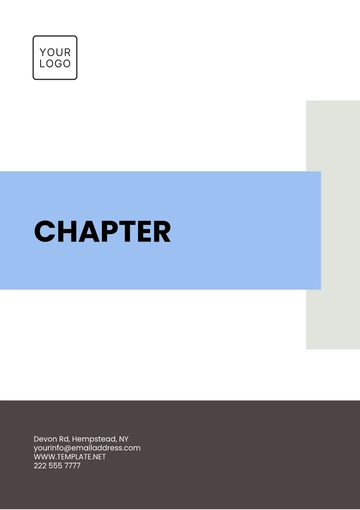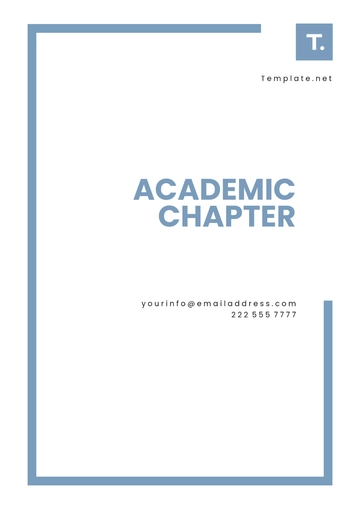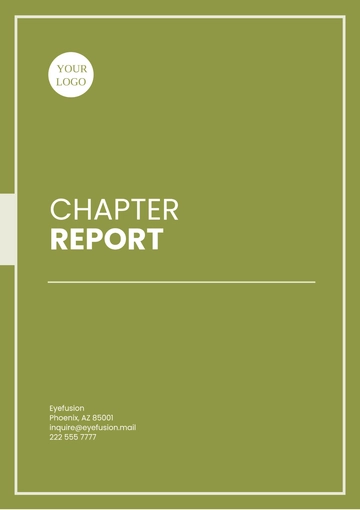Free Learning Techniques Chapter Outline
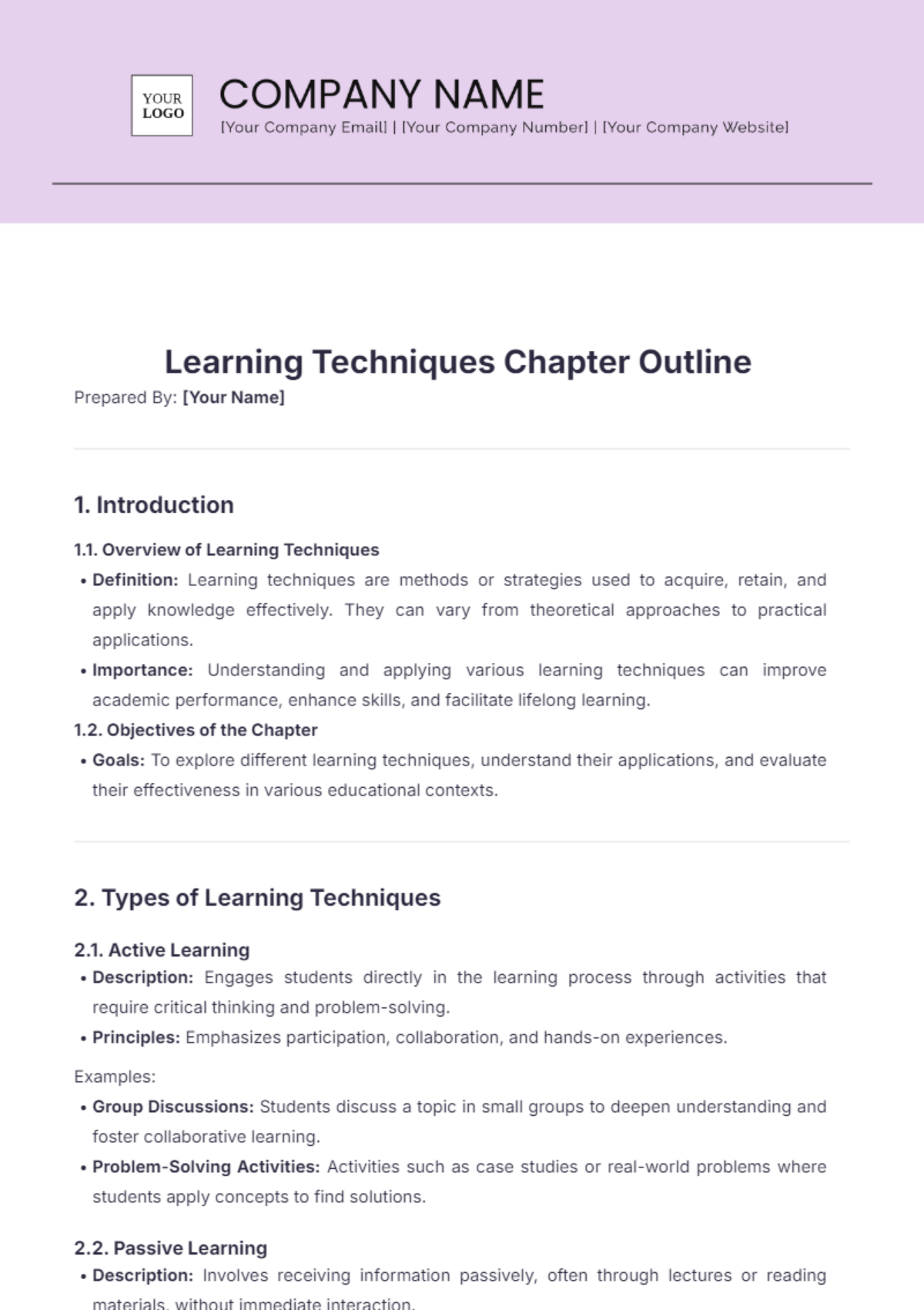
Prepared By: [Your Name]
1. Introduction
1.1. Overview of Learning Techniques
Definition: Learning techniques are methods or strategies used to acquire, retain, and apply knowledge effectively. They can vary from theoretical approaches to practical applications.
Importance: Understanding and applying various learning techniques can improve academic performance, enhance skills, and facilitate lifelong learning.
1.2. Objectives of the Chapter
Goals: To explore different learning techniques, understand their applications, and evaluate their effectiveness in various educational contexts.
2. Types of Learning Techniques
2.1. Active Learning
Description: Engages students directly in the learning process through activities that require critical thinking and problem-solving.
Principles: Emphasizes participation, collaboration, and hands-on experiences.
Examples:
Group Discussions: Students discuss a topic in small groups to deepen understanding and foster collaborative learning.
Problem-Solving Activities: Activities such as case studies or real-world problems where students apply concepts to find solutions.
2.2. Passive Learning
Description: Involves receiving information passively, often through lectures or reading materials, without immediate interaction.
Principles: Focuses on information absorption and comprehension.
Examples:
Lectures: Traditional teaching method where instructors present information to students.
Reading Assignments: Textbooks, articles, or papers that students read to gain knowledge on a subject.
2.3. Experiential Learning
Description: Learning through direct experience and reflection, emphasizing hands-on involvement.
Principles: Encourages learning through doing and reflecting on experiences.
Examples:
Simulations: Role-playing scenarios or computer simulations where students practice skills in a controlled environment.
Role-Playing: Students assume roles to explore real-world situations and practice decision-making.
2.4. Visual Learning
Description: Utilizes visual aids to enhance learning and memory retention.
Principles: Leverages imagery, diagrams, and multimedia to facilitate understanding.
Examples:
Diagrams and Charts: Visual representations of information such as flowcharts or concept maps.
Educational Videos: Videos that illustrate concepts and provide visual context.
2.5. Auditory Learning
Description: Involves learning through listening and verbal communication.
Principles: Emphasizes the use of sound and speech for learning.
Examples:
Podcasts: Audio recordings that provide information and insights on various topics.
Verbal Instructions: Oral explanations and discussions that help learners grasp concepts.
2.6. Kinesthetic Learning
Description: Involves physical movement and hands-on activities to learn effectively.
Principles: Engages the body in the learning process, enhancing retention through physical involvement.
Examples:
Hands-On Activities: Building models, conducting experiments, or using manipulatives.
Physical Engagement: Activities like interactive games or physical tasks related to the learning material.
3. Application Methods
3.1. Implementing Learning Techniques in Classrooms
Strategies for Teachers: Incorporate active learning methods, use diverse instructional materials, and provide opportunities for hands-on experiences.
Integration with Curriculum: Align learning techniques with curriculum goals and standards to ensure relevance and effectiveness.
3.2. Applying Techniques in Online Learning
Tools and Technologies: Utilize online platforms for interactive activities, virtual simulations, and multimedia resources.
Best Practices: Incorporate discussion forums, multimedia content, and interactive quizzes to engage learners remotely.
3.3. Techniques for Self-Learning
Tips for Independent Study: Create a study plan, use active recall and spaced repetition, and employ various learning techniques to reinforce material.
Resources: Leverage online resources such as educational videos, interactive tools, and digital flashcards.
4. Case Studies and Examples
4.1. Case Study 1: Active Learning in Higher Education
Overview: A university implemented group-based problem-solving activities in a chemistry course.
Outcomes: Increased student engagement and improved understanding of complex concepts, as reflected in higher exam scores and positive feedback.
4.2. Case Study 2: Visual Learning Techniques in Corporate Training
Overview: A corporation used interactive infographics and instructional videos for employee training.
Outcomes: Enhanced comprehension of training materials and increased employee retention of key information.
4.3. Example: Using Experiential Learning for Skill Development
Specific Example: A tech company uses simulation-based training for new software development employees.
Results: Employees demonstrate improved problem-solving skills and faster adaptation to real-world scenarios.
5. Summary and Key Takeaways
5.1. Recap of Main Points
Summarize the different types of learning techniques covered in the chapter.
Highlight key principles and applications of each technique.
5.2. Practical Implications
Discuss how educators and learners can apply these techniques effectively in various settings.
Provide actionable advice for integrating learning techniques into teaching and self-study.
5.3. Future Trends in Learning Techniques
Explore emerging trends such as adaptive learning technologies, gamification, and personalized learning experiences.
6. References and Further Reading
6.1. Recommended Books and Articles
List influential books and scholarly articles on learning techniques and educational strategies.
6.2. Online Resources
Provide links to educational websites, online courses, and tools relevant to learning techniques.
6.3. Relevant Research Studies
Include citations for research studies that explore the effectiveness and impact of various learning techniques.
- 100% Customizable, free editor
- Access 1 Million+ Templates, photo’s & graphics
- Download or share as a template
- Click and replace photos, graphics, text, backgrounds
- Resize, crop, AI write & more
- Access advanced editor
Enhance your teaching strategies with Template.net's Learning Techniques Chapter Outline Template. This editable and customizable resource helps organize effective learning methods. Editable in our Ai Editor Tool for easy customization.

